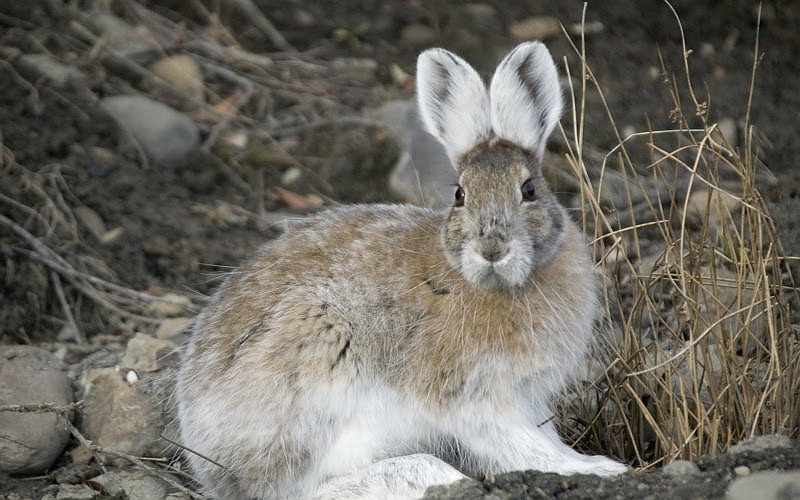Snowshoe hare: A combination of stealth, speed
Cats, bears, birds of prey, foxes, wolves and even weasels stalk the forests of North America on the lookout for prey. If you’re a small fluffy critter with no teeth, claws, or noxious scent to keep such predators at bay, you’ve always got to be on the alert. One option is to be really fast and simply outrun attacking predators. Another is to be well-hidden so the predators don’t spot you. Or you can be like the snowshoe hare and be prepared for either scenario!
People often have trouble figuring out whether the snowshoe (Lepus americanus) is a rabbit or a hare. You typically know you’re looking at a rabbit if it has shorter, more rounded ears and is smaller in size than a hare. They also prefer living in forested habitats where they can easily hide from predators. Hares, on the other hand, tend to be larger, with more pointed ears and unusually large feet. They’re often found in more open environments where they can make a mad dash away from potential threats. However, snowshoe hares break the rules.
They have the name and large feet of a hare, but the short, rounded ears of a rabbit. At 16-20 inches long and weighing 2 to 4 pounds, they are much smaller than a typical hare, and they reside in forests with a thick cover of brushy undergrowth! The real determining factor here is in how they are born. Rabbits are born hairless and blind, completely reliant on their mother for around two weeks. Like other hares, the snowshoe is born covered in fur and alert, even able to move about on their own while their mother is off feeding.
Snowshoe hares are quite widely distributed across the North American continent. They are usually found in the coniferous or boreal forests of mountainous regions, like the Rockies or Appalachians.
Most of the snowshoe’s waking hours occur under the cover of darkness (though also at dusk or dawn) and are spent eating. These little guys are herbivorous and are not very picky, so any green grasses, flowers, wild strawberries, and other low-growing vegetation will fit in perfectly on their menu plan. If you’ve ever looked at a hare or rabbit, you may have noticed they rarely look directly at you. This is because their eyes are situated on the sides of their heads, enabling them to have an almost all-round view of any potential predators that might try to snag them while they’re eating.
Even though their lifespan in the wild can be as long as five years, snowshoe hares rarely make it that long in the wild. As little as 15% make it through their first year, the others often meeting their end at the jaws or claws of predators. How does the 15% survive? Well, this takes us back to their two options in regard to avoiding predators. When a predator approaches, the snowshoe hare’s first instinct is to stand absolutely still.
In the spring, summer and fall, their brown fur helps them to blend into the leaf litter on the forest floor. When winter comes and the snow falls, their fur turns white, helping them camouflage in the snow. The hare in the image above is actually in the process of transitioning from one color to another.
Sometimes this isn’t enough and the predator spots them. That’s when it’s time to flee! The most prolific predator of the snowshoe hare is undoubtedly the Canadian lynx. In fact, these wild cats are so dependent on the hares that their population size goes up or down when the hare population does. Fortunately, snowshoe hares also have speed on their side. Their name comes from their large feet that help spread out their weight across the snow. This way, they don’t sink into the snow and can hopefully make an escape into nearby shrubbery where the predator cannot follow.
The snowshoe hare is a wonderful example of why critters of the coniferous mountain forests of North America have to be prepared for whatever life throws at them!
• • •
Christian can be reached at animaladventures1314@gmail.com



